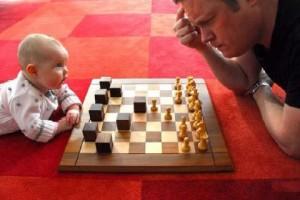
Re-learning the How and Why of Playing Chess
You're never to old to learn, so the saying goes. So, I have begun reading a new book called Chess is Child's Play by Laura Sherman and Bill Kirlpatrick. It's one of the most refreshing books on learning Chess I have read.
The book gives several reasons to learn and play chess and the simple tactics you can incorporate in to your game as you begin to learn or teach others.
The illustrations in the book have made reading and understanding the game of chess easy for beginners. So, I decided to start my review by giving you the top ten reasons you should not only begin to play chess, but also the reasons why you should begin to teach others.
The first Post in my Chess is Child's Play Notes can be read Here.
